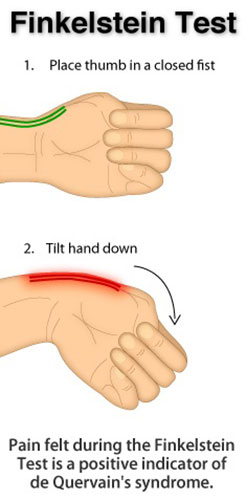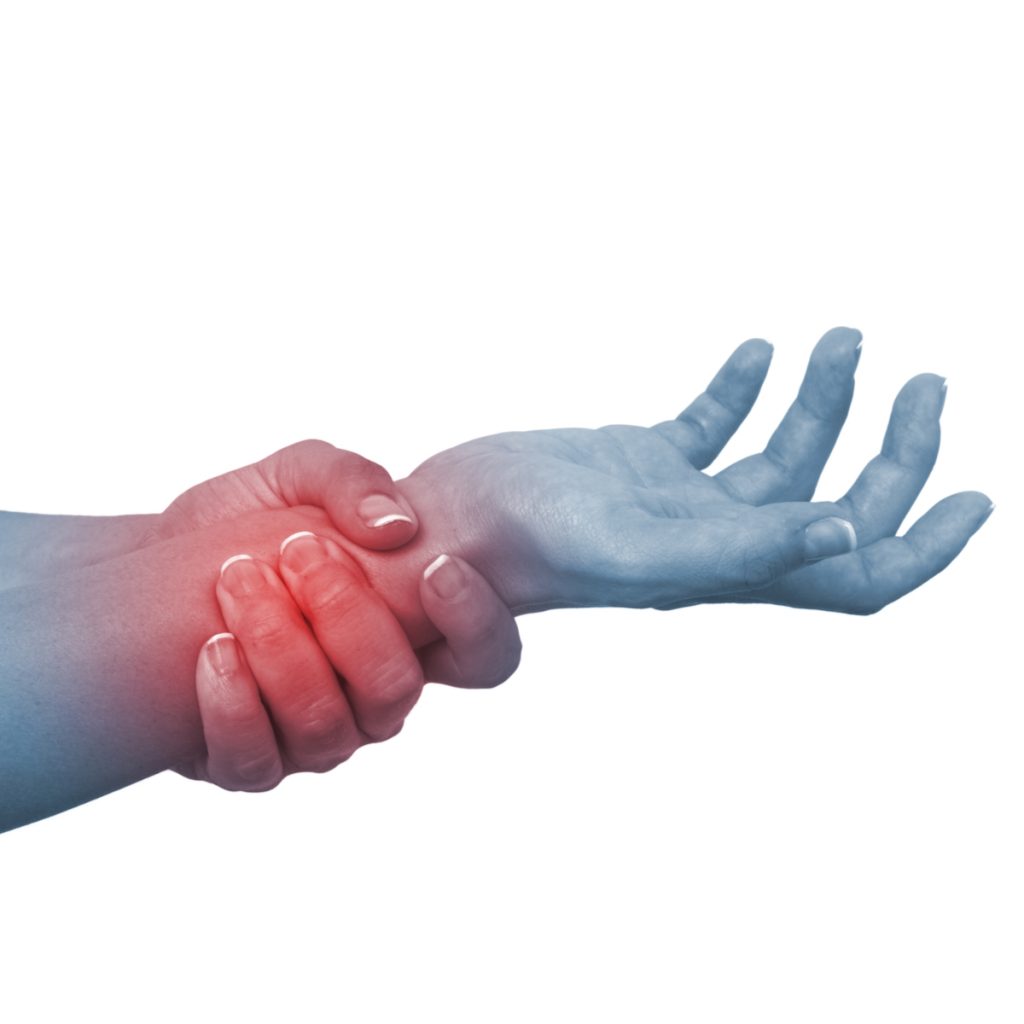Wrist pain – De Quervain’s Tenosynovitis
De Quervain’s Tenosynovitis (DQT) is a painful condition in the first dorsal wrist extensor compartment. In this compartment, there is abductor pollicis longus and extensor pollicis brevis tendons. Normally, these two tendons slide smoothly through a fibrous sheath (i.e. a small tunnel, sometimes known as a pulley) that binds down the tendons and normally prevents the tendons from bowstringing.
What causes DQT?
Repetitive strain may irritate the fibrous sheath around the two tendons, causing thickening and swelling that restricts their movement and causing pain. As a result, this may cause some tendonitis and/or tenosynovitis. Tenosynovitis is the inflammation of the fluid-filled sheath (called the synovium) that surrounds a tendon, typically leading to joint pain, swelling, and stiffness.
Other causes of DQT include:
• Direct injury to your wrist; scar tissue can restrict movement of the tendons.
• Inflammatory arthritis, such as rheumatoid arthritis.
What are the risk factors?
Risk factors include being female, age >40 and there are some racial differences. However, the exact cause of DQT is unknown, but any activity that relies on repetitive hand/wrist movement i.e. when you grip, grasp, clench or pinching anything in your wrist/hand, such as working in the garden or lifting your baby can make it worse. Therefore, DQT is commonly a chronic overuse of your wrist/hand.
What are the symptoms?
1. Pain on the thumb side of the wrist (Figure 1). Pain is aggravated especially by lifting the thumb, as in the hitchhiker position or when using scissors.
2. Tenderness if you press on the site of pain.
3. Swelling of the site of pain – compare it with same spot on the opposite wrist.
4. Clicking, crepitus or snapping of the tendons occurs occasionally.
How is it diagnosed?
In most cases DQT is diagnosed by a thorough clinical examination. A Finkelstein test is commonly used as an indicator for DQT, but in some cases further investigation is required to either confirm or exclude differential diagnoses. Ultrasound is useful to examine the integrity of the tendons and to assess for tendonitis and/or tenosynovitis and to exclude other pathology.
What is the treatment?
DQT is not harmful, but it can cause significant function impairment. Some mild cases recover over a few weeks without treatment. Treatment options include:
1. Avoiding activities that cause pain, if possible.
2. Using a wrist/thumb splint.
3. A corticosteroid steroid injection, which is effective in 70-80% of cases.
4. Surgical decompression of the tendon tunnel is the last resort, but normally very effective.

Figure 1. DQT De Quervains Tenosynovitis

Figure 2. Finkelstein Test

Figure 3. DQT as demonstrated on ultrasound



